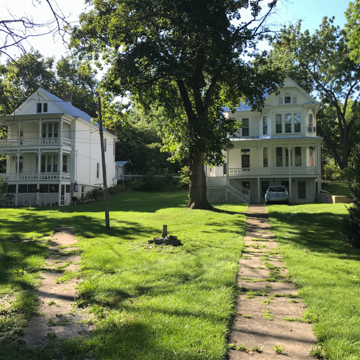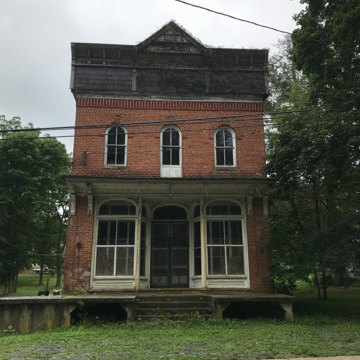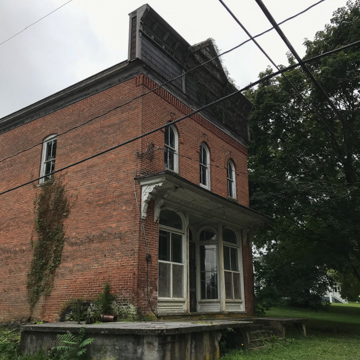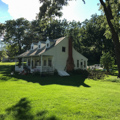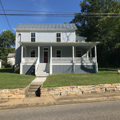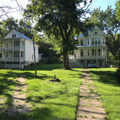Musician Joseph Funk brought significant recognition to this small community. He established his press here in 1847, produced translations of German music books and other Mennonite theological publications, and conducted singing schools throughout the region using the shape-note system promoted by his popular songbook Harmonia Sacra (1832). His house, the oldest in the village, illustrates a form used throughout the Valley in the early nineteenth century. The small one-and-a-half-story weatherboarded log structure has a gable roof extending over a full-length front porch with flush siding on its back wall. The house's two front rooms are entered through separate doors, each flanked by two windows. The front window sash, the three dormers, and rear extension are later additions. Funk's printing press was in a log structure that is no longer standing.
At 9640 Singers Glen Road the Edwin W. Funk House (c. 1892) was built by this carpenter for his own residence. The two-story, L-shaped house is adorned with a one-story porch with a decorative sawn frieze. More elaborate porches embellish the Joseph R. Funk House (c. 1894; 9675 Singers Glen) and, to the left, the William Funk House (c. 1892), both of which are attributed to Edwin W. Funk. Joseph's house has a wraparound one-story porch, William's a two-story porch, and both are two stories over raised basements with elaborate porch friezes, bay windows, and shingled gables.






